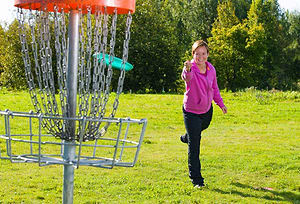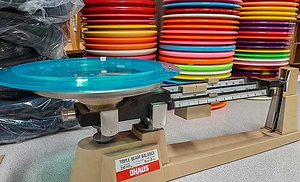Best Beginner Disc Golf Discs: A No BS Approach
TOC
Table of Contents
A guide to the best beginner disc golf discs has to be the following: accurate, to the point, and not take itself too seriously. We aim to satisfy all of that criteria in the following blog.
A Beginner Disc Golf Guide that respects you!
We know that disc golf is just one of many activities competing for your precious free time. We also know that if you don’t figure out how to play relatively soon, those new discs are headed straight for that place in your house where hobbies go to die.
We’re here to keep that from happening with disc golf. So here are the best beginner disc golf discs you should buy. In between disc recommendations, we’ve carefully selected disc golf tips to help you get a jest of the game. We promise not to overrun you with too many discs and unneeded knowledge that’ll only leave you confused and moving closer toward some other fringe sport like pickleball.
Here are our beginner disc picks (But you should still read on)
If you simply can’t wait to see which discs we are recommending, here they are. However, by skipping the rest of the article you’re gonna miss some really good stuff. But hey, it’s your life.
Putter: Xero. Midrange: Mako3. Fairway Driver: Leopard3*. Distance Driver: Sidewinder* (* means that you don’t really have to have these, at least at first).
Disc #1: Putt & Approach Disc
This is the very first disc you should buy. If you’re looking to get into disc golf and all you have is $12, ignore that Taco Bell billboard for a beefy cravings box and get you an Innova DX putt and approach disc instead. Your gut and your game will thank you for it. Not only will you be able to putt with it (like traditional golf, putting is an integral part of the game), you can throw them surprisingly far off the tee as well. So which Innova DX putter should you get?
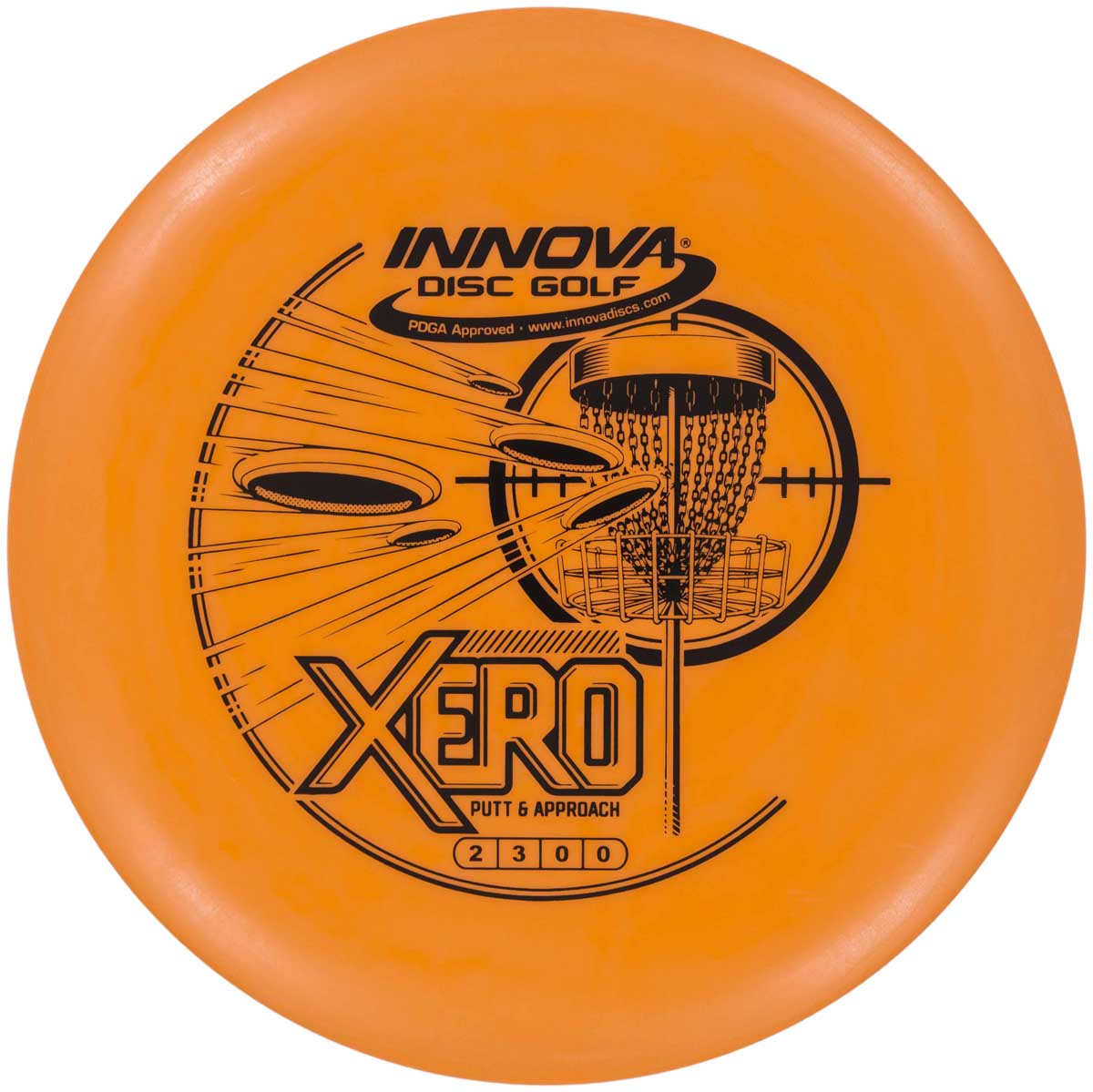
Innova DX Xero
The DX Xero is a stable putt and approach disc that yearns to fly in straight short flights to the basket. In case you are wondering, straight is very good in disc golf. The Xero is easy to handle no matter who you are, even if you’re hard to handle yourself, like a celebrity.
Let’s break down the Xero’s Flight Numbers
2 (Speed) / 3 (Glide) / 0 (Turn) / 0 (Fade)
Ok. So, Flight Numbers will seem pretty foreign right now. But just let this paragraph seep in and we’ll explain them further in a minute. The Xero putter (as well as most putters) have a slow Speed. And when you combine that with zero Turn and Fade, that translates into a straight, neutral flight. That comes in handy when you’re near the basket for putts, but it’s also golden for short range shots 150 feet and in. Driving with these discs works too because they don’t stray too far from your desired flight when you miscalculate.
Tip #1: Flight Numbers
Here’s your Flight Numbers (aka Flight Ratings) explanation: Every disc is assigned four Flight Numbers or ratings: Speed, Turn, Glide, and Fade. Through these ratings you can get an idea of how the disc will fly without actually having to throw it. Think of it as seeing a car’s performance specs before driving it. Flight numbers are great for choosing new discs, selecting discs for certain shots, and comparing discs. Beginners really don’t need a comprehensive understanding of flight numbers, but they should know this:
Speed (the first Flight Number): Stick with discs below a 9 Speed rating. Ideally, though, you want to start with just a putter (2-3 Speed) and/or a midrange (4-5 Speed).
Fade (the last Flight Number): Go with discs with less than a 2 Fade rating. Anything more is gonna make a straight flight very difficult for a new player. I’m mean real hard. Like about as hard as asking your cat to empathize with you.
If you want a full explanation of how these work, go to our disc flight numbers blog story. After learning the basics, these numbers can tell you if the disc is understable, stable, or overststable.
Wait, what does understable, stable, and overstable mean?
I know, we’re overloading you a bit here with knowledge, but you really need to know this. This’ll be quick, I promise. To best illustrate these terms, think of a guy from the 70’s with feathered, flowing hair, a headband, and long tube socks throwing discs around with his right hand in the traditional backhand style we all learned as kids. To better illustrate this fella let’s crank up the ol’ ai generator and see what it comes up with.
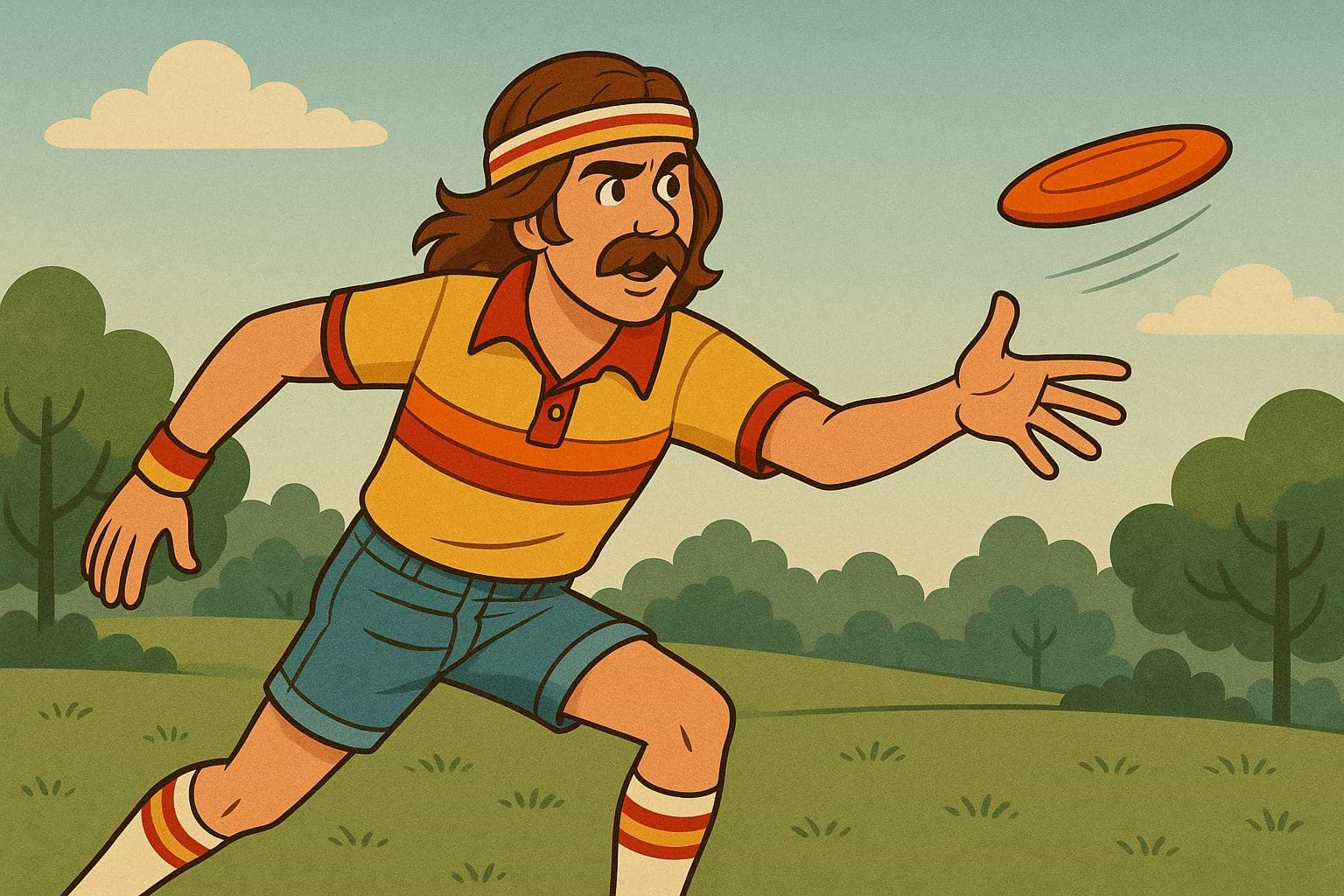
Well, he’s not throwing with his right hand, but just imagine that he is. So, the first disc the 70’s dude throws, starts straight, but then slices to the right before returning (or fading) back to the left. This is what we call an understable disc. 70’s dude then throws another disc, that maintains a straight line for most of its flight before modestly fading left. This is a stable disc. It maintains whatever line you throw it on. Lastly, our 70’s dude heaves a third disc that hooks to the left shortly after release. This, my friends, is referred to as an overstable disc. That’s the basic explanation, anyway. For more, go to our Overstable vs Understable blog story.
***In case you were wondering, Beginners do best with understable and stable discs: Why? Because it takes less power and skill to control the flight.
Disc #2: Midrange Disc
Now, if you only have enough money for two discs, get you an Innova DX Xero and get a DX mid range disc as well. You’ll notice how I didn’t write driver. Drivers come later, and besides a lot of courses can be played well with just a putter and a midrange. What are mid range discs you say? Well, they’re usually a little bit larger than putters and a little bit faster, but not by much. What these discs lack in velocity they make up for with control and versatility, much like a Subaru Outback or Honda Civic. Not flashy, just dependable and with good gas mileage.
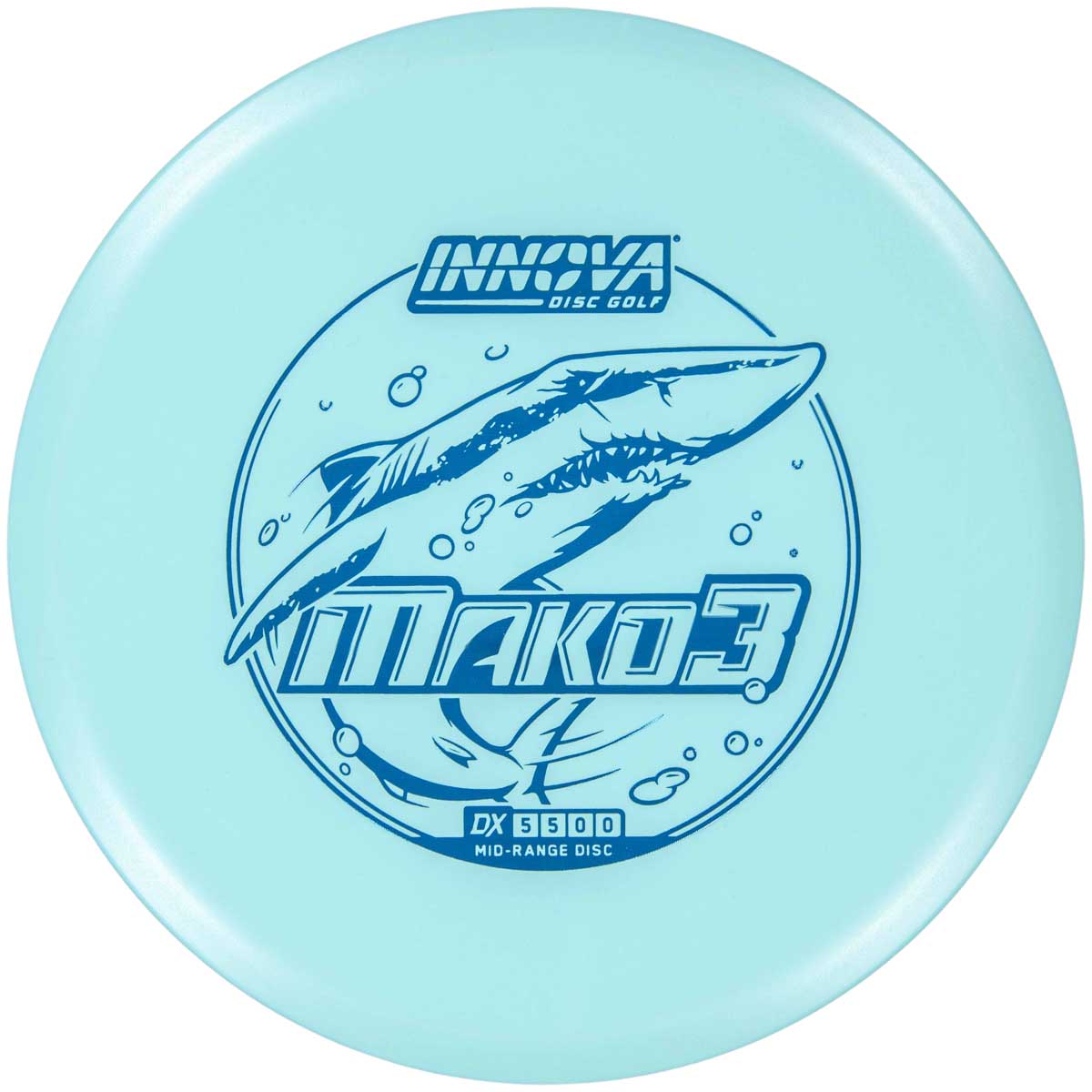
Innova DX Mako3
The DX Mako3 is a stable putt and approach disc that yearns to fly in straight, medium length flights to the basket. Sounds familiar, right? That’s because the Mako3 is like the midrange version of the Xero.
Let’s break down the Mako3’s Flight Numbers: 5 (Speed) / 5 (Glide) / 0 (Turn) / 0 (Fade).
Remember about zero Turn and zero Fade? It’s the recipe for straight, easy flight, especially for beginners. Let’s bring out a visual aide. Too bad this isn’t a 1990’s classroom, a transparency from an overhead projector would work perfect for this. Anyway, take a look at the chart below. The Mako3 (yellow) is flanked to the left by a more overstable disc (Roc3) and flanked to the right by a more understable disc (Wombat3). The Mako3’s neutral Speed and Fade ratings keep it straight, humming right along.
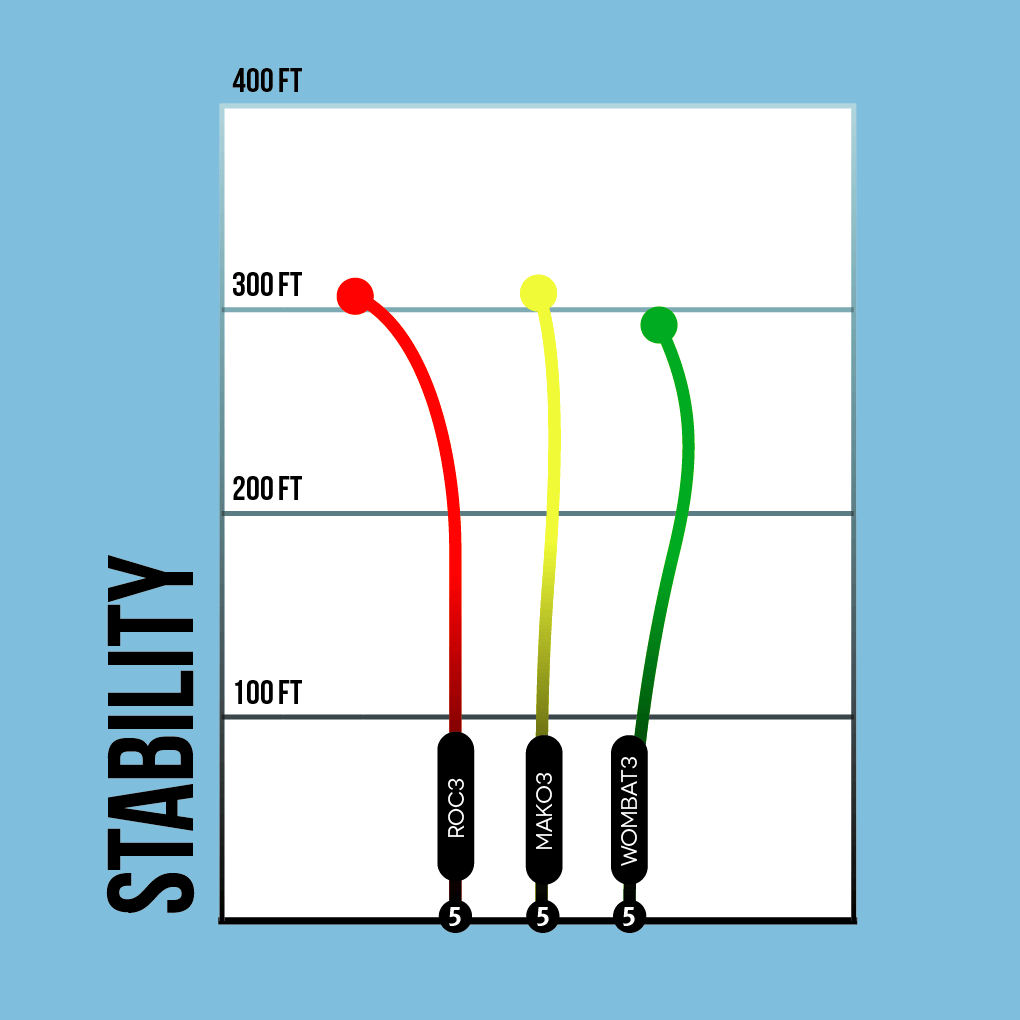
Is my weight an issue? Simple answer: Yes.
Discs come in a range of weights from 150 grams all the way to 180 grams. As you can imagine, the heavier the disc, the more overstable it becomes. Remember our long-haired 70’s dude? If he has two of the same disc but one is 150 grams and the other is 175 grams, and he throws them the same way, the lighter disc will fly noticeably more understable. Beginner disc golfers should always steer toward lighter weights and then work up from there. Starting out, we would recommend the following:
Men: 160-170 grams
Women: 150-165 grams
Youth: 155-165 grams
Children: 150 grams and below
Disc #3 Fairway Driver
The next two discs we list really aren’t essential for a beginner disc golfer. Like we said earlier, all you really need to start with is a putter disc (Xero) and a mid range disc (Mako3). But if you’re dying to put a driver in your bag, then, I suppose you could throw-in a fairway driver. Fairway drivers are discs that go faster than putters and mid range discs, but don’t reach the blistering speeds of distance drivers. Remember, as the disc speed increases, the challenge to control it also escalates. The way I think of it, throwing faster discs is kind of like carrying a vat of bubbling spaghetti sauce. The faster you go, the easier it is to trip and fall and dump red sauce all over the rug and ruin your afternoon.
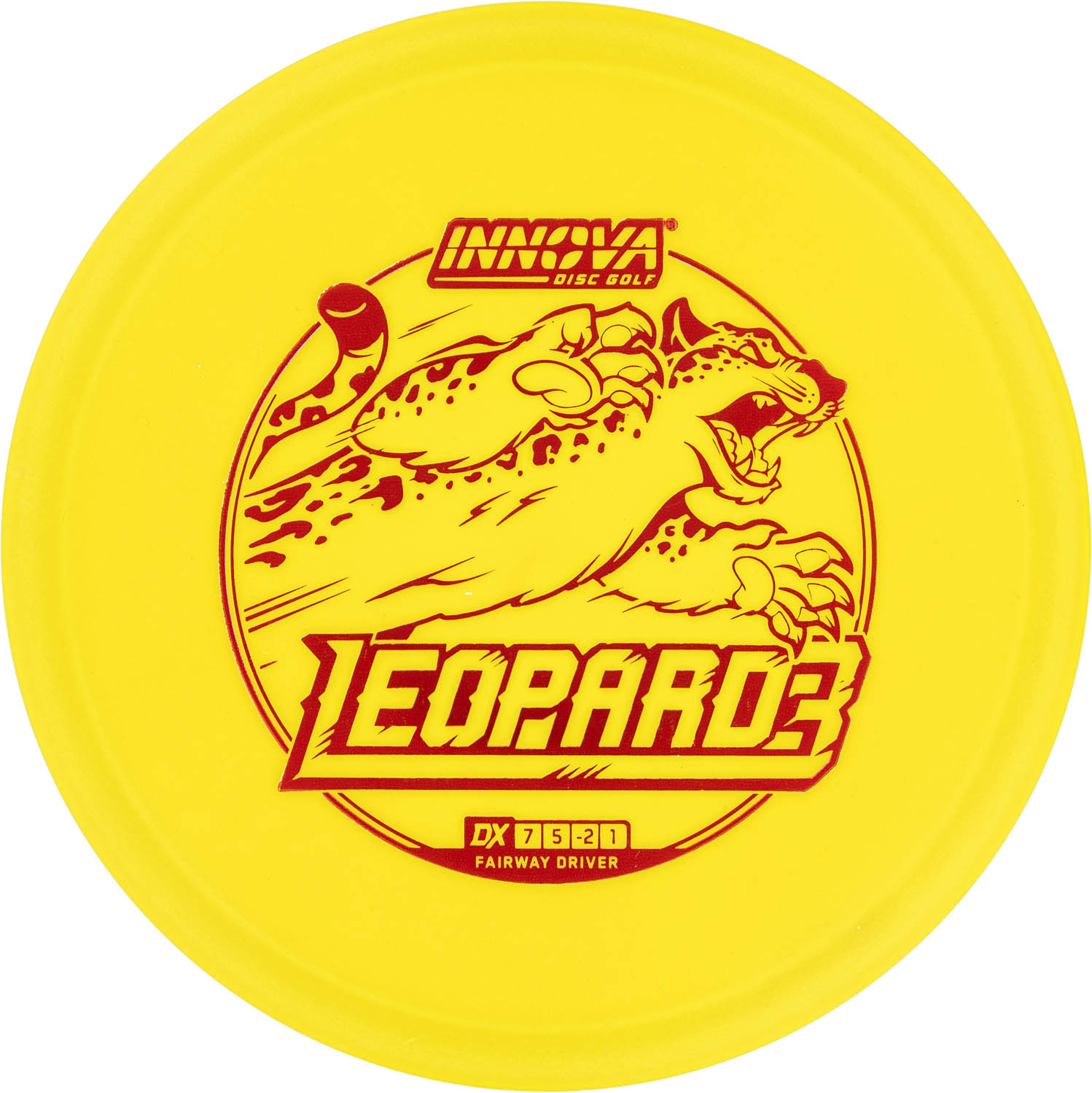
Innova DX Leopard3
The DX Leopard3 is a stable to understable fairway driver that’s designed to fly straight, or at least fairly straight for the most part. The good thing about fairway drivers is that they can get you a little extra distance, without veering too far off the fairway.
Let’s break down the Leopard3’s Flight Numbers: 7 (Speed) / 5 (Glide) / -2 (Turn) / 1 (Fade).
Remember how the Xero’s speed was a 2? The DX Leopard3’s Speed of 7 will now seem like the Concorde (anyone get that airline reference?) in comparison. Its Turn and Fade ratings are pretty modest, so that means it has the potential to fly pretty straight. But keep in mind, that’s if you throw it correctly. If you don’t, the disc will just dump (or fade) to the left not long into its flight. Work on releasing the disc flat. Feel free to use your best dad voice to emphasize that if it helps. Speaking of releasing the disc flat, check out another sweet visual aide of ours that illustrates the three most common ways to release a disc. I know it sounds strange now, but someday you’ll be using the words Hyzer and Anhyzer without giggling.
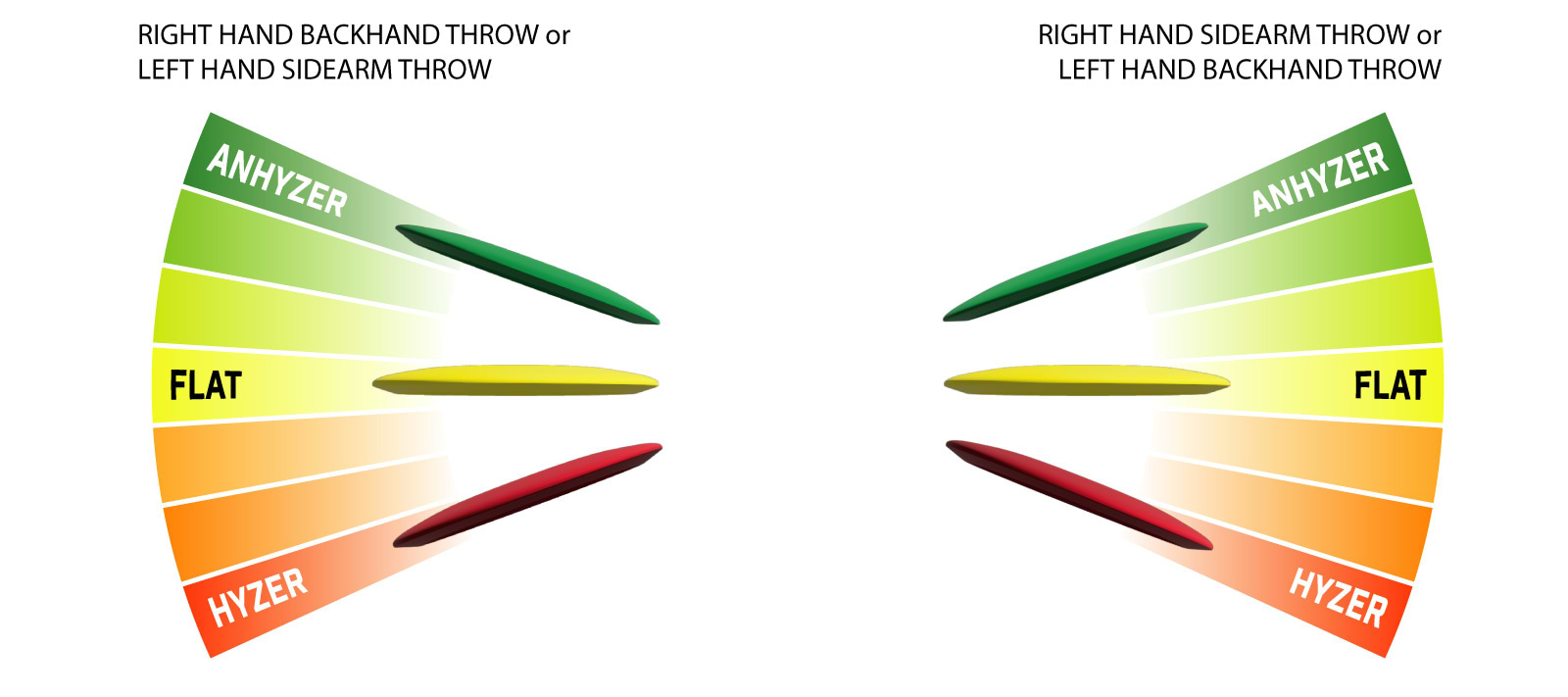
Where to throw? The Course … Wrong!
After purchasing your Xero putter, Mako3 midrange, and Leopard3 driver, the temptation to go straight to the disc golf course to try them out will be great. In fact, it will be so great, I will not even try to get in your way. And that’s fine. Go ahead. Give them a spin. Have fun. But don’t expect too much. Just try to leave the course with all of your discs. When you’re ready to learn how these discs fly, go to an open field to practice. This is where you can practice all kinds of different shots and not worry about score or losing your discs. Be sure to devote some time to throwing your putter discs. They will really help you refine your form and make it easier to move up to more sophisticated discs over time. The field (and your backyard for putting practice) is where you get better at disc golf.
Disc #4 Distance Driver (When you’re ready)
I don’t want to get too much into distance drivers because like I’ve mentioned before, they’re really not necessary for beginner disc golfers. Often, they’re like time machines from the movies – a fun idea at first, but soon enough you find yourself in unexpected trouble. However, a distance driver that’s well suited to your skill level can knock off a chunk of yardage and get you into birdie territory – something that’s pretty important if you ever want to beat your friends, which is the thing all of us really want anyway, right?
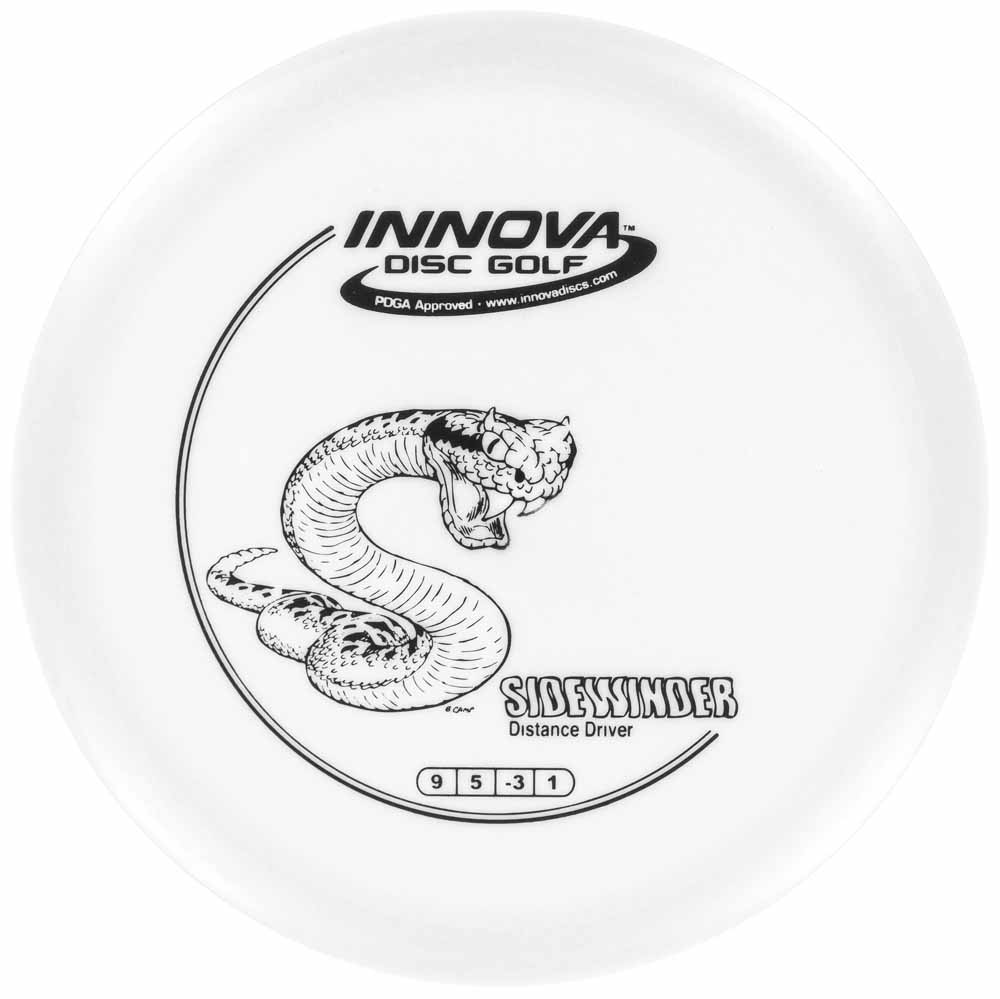
Innova DX Sidewinder
Two notches faster than the Leoaprd3, the DX Sidewinder (Speed 9) can really cover some ground in a short period. (FYI: The Sidewinder has been reclassified as a fairway driver, but its Speed of 9 is as fast as we’ll go for beginners, so we’ll refer to it as a distance driver for this article). Remember how I said the faster the disc, the harder it is to control? I still mean it. But, the Sidewinder and other understable drivers try to help you out as much as a disc made of plastic can. Its high Turn (-3) and low Fade (1) help straighten out this speedy disc so that those with noodle arms (what we call disc golfers learning to throw) can pull off controlled shots that stay on course.
Why all DX plastic?
You may be wondering why I’ve selected the same plastic, (DX plastic) for all of my disc recommendations. Here’s why:
- DX is the most affordable.
- DX is the most understable plastic and the easiest to break-in, and therefore most likely to fly as intended the soonest. When you’re a beginner you want every advantage.
Start with DX: The original flight characteristics of DX discs may not last as long as a disc in premium plastic (as discs get worn in they become more understable), but it will last long enough for you to get plenty of rounds in with it. And, just as important, to know if you like it. As you gain in experience and skill and become partial to certain discs. Purchase those in the high-end plastics, so you’re able to lock in your favorite flight characteristics for a long time. However, many people continue to use DX for putters and midranges because of its good grip.
That’s it. Finito!
That wasn’t too bad, was it? Let’s review to make sure you’ve retained something:
- Start with a DX Putter (Xero) and a DX midrange (Mako3)
- Pick light, manageable weights
- Stay away from drivers for a while. At least until you’ve mastered your putter and midrange.
- Flight Numbers can be confusing. Don’t worry about figuring them all out. As a beginner you should look for discs below 9 Speed and below a Fade of 2.
- Stay away from pickleball, at least until you’ve figured out disc golf.
Personalized Disc Recommendations
Just answer a few questions and we’ll send you personalized recommendations within 24 hours.
GET PRO TIPS
